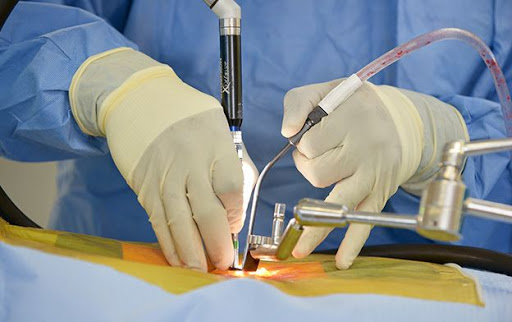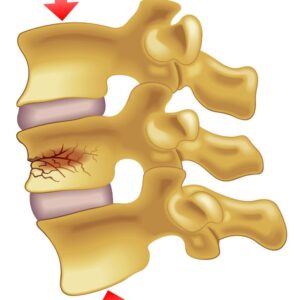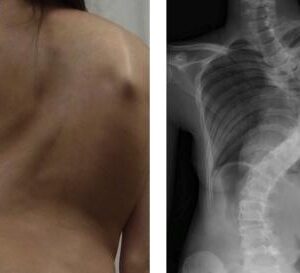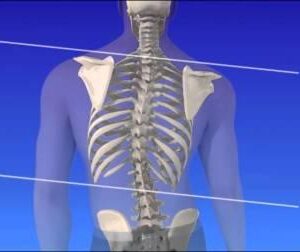The spine gives our body stability and strength every time we move around. Plus, the spinal vertebrae (bones) also serve as a protection for our spinal cord. Thus, any problems in our spine must be addressed by an experienced orthopedic surgeon.
Minimally invasive methods will be attempted first to address your pain or debilitating back issues, such as pain injections. If these do not solve the problem, then your orthopedist may perform minimally invasive spine surgery.
There are several types of spinal surgery that can help those who are experiencing back pain, including the following:
Cervical Spine Surgery
If nonsurgical treatments fail to reduce neck pain and associated signs and symptoms, especially those related to compression of the spinal cord or nerve roots, surgery may be considered.
Anterior cervical discectomy and fusion is one of the most common surgeries to address neck pain.
3 Reasons for Neck Surgery
Surgery to relieve neck-related pain is typically performed for one or more of the following reasons:
- To decompress a nerve root (by removing a damaged disc and/or other problematic structure)
- To decompress the spinal cord
- To stabilize the cervical spine
If imaging and diagnostic tests cannot confirm one of these reasons for the neck pain and/or related signs and symptoms, such as pain, tingling, or weakness that goes into the arm, surgery is unlikely to help and is not recommended.
Common Types of Surgery for Neck Pain
The two most common surgery options for neck pain are designed to remove a damaged disc and restore normal spacing within the vertebral level to decompress a nerve root and/or the spinal cord.
Anterior cervical discectomy and fusion (ACDF)
The most common surgery for neck pain involves a discectomy, which is the removal of a problematic disc in the cervical spine. Typically, the surgery is performed through the front of the neck, called anterior cervical discectomy. This procedure is done in conjunction with a cervical spinal fusion to maintain spinal stability where the disc was removed.
See ACDF: Anterior Cervical Discectomy and Fusion
Another way to do a discectomy is through the back of the neck, called posterior cervical decompression or microdiscectomy, where only part of the disc is removed and no spinal fusion is needed. The location of the cervical disc herniation must be accessible with minimal manipulation of the spinal cord. If the location is too central, it is safer to use the ACDF approach.
Watch Anterior Cervical Discectomy and Fusion (ACDF) Video
Cervical artificial disc replacement (ADR)
A somewhat newer option is discectomy with artificial disc replacement. This surgery involves removal of the damaged disc and replacement with an artificial disc, rather than a fusion.
Compared to ACDF, a potential benefit of cervical ADR is that it retains more natural neck mobility. As a somewhat newer method, however, it is practiced by fewer surgeons than ACDF and longer-term outcomes are still being studied.
ACDF is still considered the gold standard for neck pain surgery, but cervical ADR has been gaining in popularity. In some cases, such as when advanced spinal degeneration is present, ACDF may still be an option but not cervical ADR.
Other Surgical Options for Spinal Decompression
Sometimes other surgical options may be used instead of or in conjunction with a discectomy to help relieve signs and symptoms related to cervical nerve root or spinal cord compression.
- Posterior cervical laminectomy is done through the back of the neck and involves the removal of a lamina, which is the back part of a vertebra. A potential advantage to this surgery is that more flexibility in the neck can be retained if a spinal fusion can be avoided. Sometimes a spinal fusion is still done in conjunction with laminectomy.
- Posterior cervical laminoplasty is similar to the laminectomy, except the lamina is not completely removed. Rather the lamina is cut and restructured to make more space in the spinal canal.
- Posterior cervical foraminotomy is performed through the back of the neck and a small part of the foramen is removed. If a nerve is irritated by a herniated disc, the surgeon might remove part of the disc. If a nerve is irritated by a bone spur, the surgeon chisels away that bone spur. No spinal fusion is needed.
- Anterior cervical corpectomy is similar to anterior cervical discectomy, except that it involves the removal of at least one vertebral body (the cylindrical bone at the front of a vertebra) along with the adjacent discs above and below that vertebra. After the removal, a bone graft and/or cage is placed to fill the space and set up a favorable environment for the bones to fuse together into one solid segment. This surgery is rarely done, but it may be an option for spinal cord compression at multiple spinal levels.
Neck Pain Surgery Risks
While modern neck surgery procedures are relatively safe, they still carry risks for potentially serious complications, such as infection, allergic reaction, excessive bleeding, or paralysis. If a surgical solution is considered, all appropriate nonsurgical options must have been exhausted, the patient is considered a good surgical candidate, and the surgeon has reviewed the risks, benefits and alternatives of surgical treatment with the patient as well as answering all questions.
Lumbar Spine Surgery :
Lumbar Decompression Surgery for Spinal Stenosis
Lumbar decompression surgery, also called a lumbar laminectomy, is performed to correct the narrowing of the spinal canal – also called spinal stenosis. The surgeon will remove all or part of the lamina which is pressing against the spine and causing excruciating pain.
In spinal stenosis, pressure is being placed on the spinal cord due to the age-related narrowing of the spinal canal. The goal of surgery is to widen the canal and thereby release this pressure. This may involve the surgeon removing bone spurs or excess tissue.
Lumbar Discectomy
A lumbar discectomy is spine surgery involving an injured disc in the patient’s lower back region. There are two types of lumbar discectomy: minimally invasive arthroscopic discectomy and open spine surgery. Open spine surgery is the more common procedure for a herniated disc in the lumbar area.
Herniated Disc Surgery
In a surgery to repair a herniated disc, the surgeon will remove part or all of the injured disc. The physician may remove the disc altogether and enable the two adjacent vertebrae to fuse together in order to stop the disc pain; however, spinal fusion causes the inability to move that section of your back, so this decision must be made carefully between you and your doctor. That said, spinal fusion surgery is much safer and less risky than it was in prior years.
Spinal Fusion Surgery
During a spinal fusion, the surgeon connects two adjacent vertebrae in order to avoid pain caused by their movement against each other. The surgeon uses small screws and rods to connect the vertebrae, and they are then left to naturally heal and fuse together. The physician may also take a small bone graft from another part of your body to help the vertebrae to fuse.







There are no reviews yet.